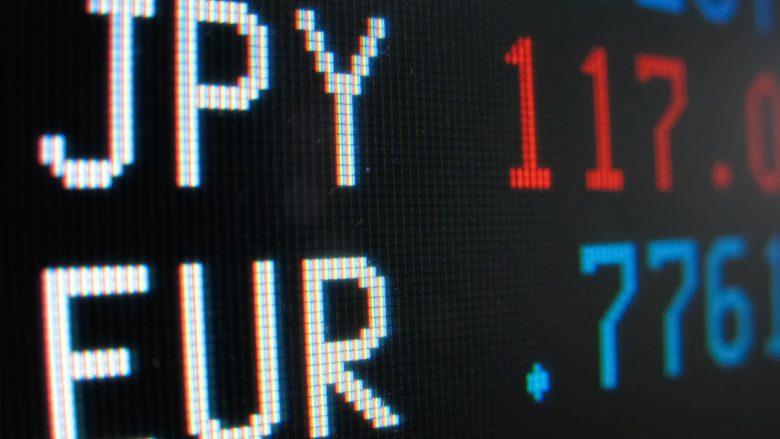Trade happens daily, and the market can be up and down anytime. Investors can withstand the pressure only when they have the talent and knowledge on how to work and when to invest in the stocks. When you buy or sell stocks, you need to do it quickly as the market may fall or rise at any time. Making quick investments quickly will lead to swinging trades, check TradingWolf.
Contents
Best indicator for swing trading

Source: gobankingrates.com
There are ample opportunities to make a profit with the market swings. You need to know the swing trading indicators to take advantage of it. The tension between bears and bulls constantly oscillates, and swing trading works on the principle of price actions being rarely linear. These oscillations are identified as opportunities for profit by the swing traders. A swing trading indicator is a technical analysis tool to find new opportunities. Swing traders want to profit from mini trends with highs and lows and use indicators to identify new momentum. Here are the top three swing trading indicators to work with the best strategy in the market:
1. Moving Averages
Moving Averages over a given time calculates the mean of the market’s price movements. They are smoothened by erratic short-term spikes and are referred to as lagging indicators based on past price actions. Moving Average lags more when the time covered is longer. These MAs are used to conform to trends rather than predict them.
2. Volume
Swing traders’ one of the most needed indicators is Volume as it provides insights regarding the strength of a new trend. The trend with the highest Volume is the strongest, which is the simple principle of Volume. There will be a better basis for price actions when more traders buy and sell. Volume is the main component in a breakout strategy as they tend to follow a period of consolidation accompanied by low Volume—the Volume spikes as and when the breakout takes hold.
3. Ease Of Movement (EOM)
The Ease of Movement is the indicator that offers a closer look at Volume by showing how it relates to the price action. Using EOM, you can identify if a low volume or traders control the market movement. With zero as the baseline, EOM indicators are plotted on the chart, and when it rises above zero, it is a sign that the market’s price is advancing with relative ease. It is a sign of a fall in the market with increasing ease when the EOM drops below zero.
The relative Strength Index (RSI) provides several different trading signals. It is a popular tool for new traders, with the momentum indicator finding its prominence amongst both new and advanced traders after the developments done by J Welles Wilder. The simplicity of it drives the attention with the oversold parameters providing clear signals to buy and sell.
Which RSI is best for swing trading?

Source: iexpats.com
1. Overbought/Oversold
Overbought/Oversold is the standard method of using the RSI, which is similar to many other range-bounded momentum indicators where it utilizes the conditions of overbought or oversold. There is plenty of quirks while using this tool as the traders will see the market as being overbought above 70 and oversold below 30.
2. RSI divergence
When a momentum fails to follow price action, a divergence creates peaks and troughs. You want to see RSI make a new higher high for an uptrend along with price action. When the momentum does not create a more elevated and possibly a lower high and the price forms a higher high, it could be a sign of where the market is about to turn. It is essential to wait for a signal in price action to make a confirmation of the potential reversal highlighted by an RSI divergence.
3. Failure Swings
A failure swing is a failure in creating a new uptrend (higher high) or downtrend (lower low). There are several methods by which these failure swings can be utilized, with standard technical analysis patterns. Patterns like wedges, head and shoulders, Double tops, and others can be utilized as potential reversal signals.
What charts do swing traders use?
Candlesticks and oscillators can be used independently or combined to highlight the potential short-term trading. Swing traders specialize in technical analysis to take advantage of short-term price moves. To trade successfully in these swings requires accurately determining both trend directions and trend strength. This can be done using oscillators, chart patterns, volume analysis, fractals, and other methods.
Oscillator divergence

Source: guardian.ng
When the price is against the momentum oscillator, divergence is created. Before reversing the directions, anything loses its momentum, and this is relating to the reversal occurring in the stock market. For a trade, divergence is a good starting point as it doesn’t always need to be present, but if it is present, the candlestick patterns will be more powerful and likely to get better results. When the price gets higher, RSI moves down. The divergence shows weakness in the rise affecting the visibility e of the price action as it could barely make any new hires before falling.
Bullish and Bearish Engulfing Pattern
Bullish and bearish engulfing patterns are among the most popular candlestick patterns. The bearish engulfing pattern is characterized when the price is higher; it shows typically via green or white candles. When strong selling has entered the market, the down candle ultimately envelops the prior candle. The bullish engulfing pattern is quite the opposite of the bearish engulfing pattern. As the price falls, the giant can envelop the prayer candle showing that aggressive buyers have entered the market.
Indecision candles
Indecision candles can also be called the spinning top pattern, which is very common in candlestick reversal patterns. It appears as a small body with long tails showing in decisions because of the volatility throughout the period, but in the end, the prices are near where they started. There will be a significant move of the price in One direction or the other, which should be called the direction to trade-in.
